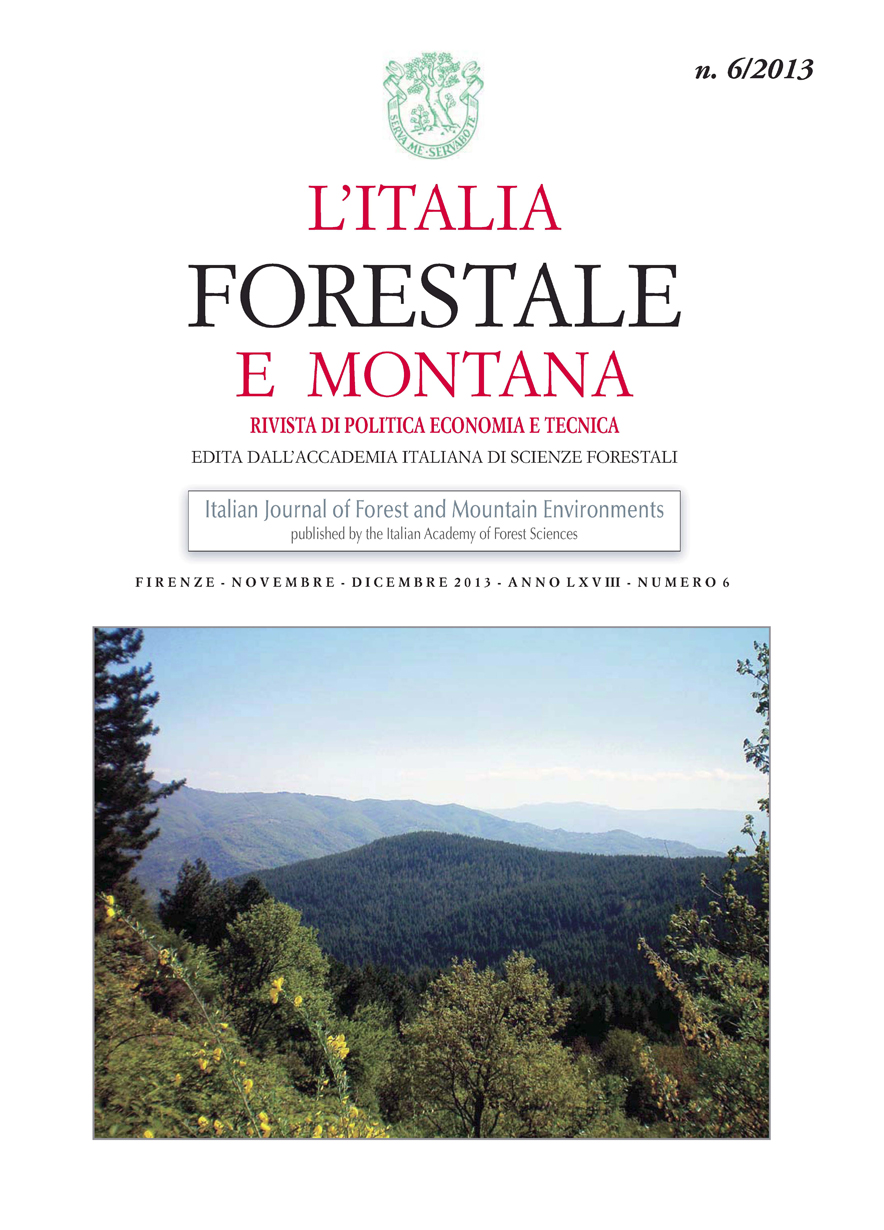Articles
Multifunctional management of mountain reforestations: thoughts and perspectives from a case study in Central Italy
Published 2014-01-23
Keywords
- mountain reforestation,
- Pinus nigra,
- forest management,
- systemic silviculture,
- stand structure
Copyright (c) 2014 Italian Journal of Forest and Mountain Environments

This work is licensed under a Creative Commons Attribution-NonCommercial 4.0 International License.
Abstract
The conifer reforestations established during the last century in many mountainous areas of Central and Southern Italy allowed the restoration of thousands of hectares of degraded bare lands. During the last sixty years many social and environmental functions were added to such forests and now they require a multifunctional management approach. A 100-years old reforestation with black pine (Pinus nigra Arnold) located in a mountain tourist area and within a Natura 2000 site in Central Italy was taken into consideration as a case study. The stands, although even-aged and dense, have a diversified structure as a consequence of localized wind throws and the growth of an underlayer of hardwoods. The traditional,timber production-oriented management based on strip clear cutting has shown to be inapplicable in such a context. Systemic silviculture grasps this challenge as it assumes as fundamental management goal the search for the functional efficiency of the forest ecosystem. In such a perspective silvicultural practices are guided by an adaptive approach, based on trial and error, rather than on so-called normalisation schemes. Starting from the concept that forest is a complex, self-regulating, dynamically changing system,a management trajectory is proposed to foster the gradual succession of the pine stands towards different types of pure and mixed hardwood forest according to site conditions. The basic silvicultural criterion is to reduce gradually the pine cover by thinning and opening of small gaps in order to increase tree age and size diversity. The public incentives necessary to implement this sort of management are justified by the goal of increasing the functionality and resilience of the forest system: both elements can reduce the riskof damages for the forests. This paper aims to provide general considerations on such issues in the form of
a commentary discussion with reference to the considered case study.

